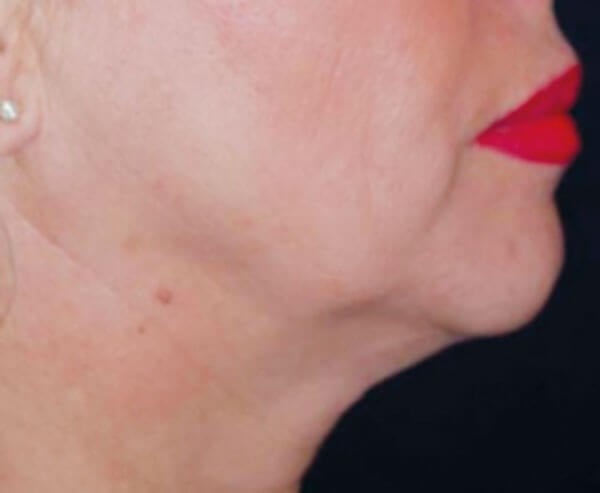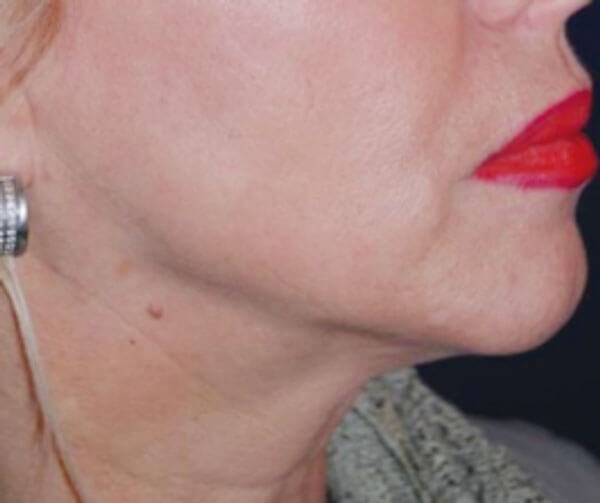The ‘BodyTite’ system is becoming increasingly popular, initially launched as the radiofrequency assisted liposuction (RFAL). We started using the BodyTite system over four years ago. Now the system has been updated to include the Neck / Face / AccuTite handpieces.
These are all based on the application of a bipolar internal and external radiofrequency – the resulting tissue heating produces lipocoagulation, internal tissue heating and contraction. The new system of FaceTite and NeckTite obtained Food & Drug Administration (FDA) approval in 2016 and has been upgraded with several safety features to make use of the system easier and safer. The procedure may be used purely to cause tissue tightening by thermal stimulation or it can be combined with limited liposuction if required.
In my clinical practice the FaceTite / NeckTite is discussed with patients who are not wanting a formal face / neck lift and are willing to accept a maximum of 50% improvement compared to a formal surgical procedure. Patients with soft tissue laxity of the submental area, jowling, and soft tissue laxity of the neck are best suited to the FaceTite / NeckTite. A validated scale for the jawline and submental laxity (Merz Aesthetic Scale) is used to discuss the patient’s current condition and explain that a realistic expectation is a 1-2 point improvement.

Figure 1: Patient pre-treatment.

Figure 2: Patient post-treatment.
Following a full consultation of alternatives and examination the procedure is explained in full. In particular the time frame for improvement of three to six months with a continual improvement over a 12-month period. Preoperatively, the areas are recorded with a 2D and 3D photograph (Quantificare) and the patient is consented for the procedure. The patient is prepared for a local anaesthetic day-case procedure.
The neck and lower jaw area are cleaned with a hypochlorous skin antiseptic and anaesthetised with local blocks to the inferior mental nerve and also a cervical pelexus block around the sternomastiod region. The region is then infiltrated with a local anaesthetic mixture of lidocaine 1% (either plain or with epinephrine) 20ml with 50mls saline to provide an infiltration of ‘wet anaesthetic’. This infiltration provides space for the internal probe to be advanced in the subcutaneous tissues and allows conduction of the radiofrequency to the underlying fibrous tissue septae to provide thermal contraction and allow working temperatures to be reached quickly.
Stab incisions are made in the inferior jaw line just anterior to the jowl (prejowl sulcus) and also at the mid-sternomastoid point laterally on the neck. The external temperature cut off is set for 40°C and the internal between 55-65°C. The internal probe is advanced initially to ‘pre-tunnel’ the subcutaneous tissue. The skin and insertion points are kept clean with the hypochlorous spray. Sterile ultrasound gel is applied to the skin and the FaceTite probe is advanced to the full length from the insertion point (pre-jowl) towards the tragus, keeping the probe in the subcutaneous tissue above the platysma. At this point the radiofrequency is activated to reach the desired internal temperature, a retrograde technique is used in a fanning manner. The areas are kept clean with copious sprays of hypochlorous and gel on the skin to allow smooth sliding of the external applicator.
The area is treated so that the tissue reaches the desired internal temperature delivering approximately 1.5-2KJ energy. The submental area, lateral submandibular zones are then treated, followed by insertion into the mid neck point to treat the lower neck. A cross fan technique through the pre-jowl insertion point and mid neck point allows the tissue to be heated to the desired point with a delivery of approximately 3-6KJ energy in the lower neck. Finally, I treat the subdermal tissue and dermis using the Morpheus8 (radiofrequency microneedling). The skin is then protected with a layer of Derma-Seal®.
Post treatment the insertion points are closed with steri-strips and dressings. A compression band is applied for three continuous days. Oral analgesia is given to the patient. After three days the patient can use the compression garment just at night for the next two weeks. The swelling recedes over the next two to four weeks. The results evolve over time and become evident over the next three months as the ‘shrink-wrap’ effect becomes visible.
Declaration of competing interests: None declared.
Acknowledgement: Figures are courtesy of Dr P Rovatti, MD.
COMMENTS ARE WELCOME





